The Wild World Around Us.
Setting the Context- An Intro to Wildlife and Conservation
This weekend was focused mainly on setting the context for the weeks to come and included what wildlife means to us and why is wildlife and forests necessary. This week included a lot of fun workshops, walks and talks by various individuals.
Nature Walk Around Kambipura
with Sangeetha Kadur and TS Sreenivasa.
Wild Malhar @ Koota kicked off with a nature walk around Anchepalya Lake with the kids of Malhar and surrounding areas. There were around 13 kids and the atmosphere was exciting. Many of the kids had not visited the lake and were eager to see and learn new things. Mr. Sreenivasa taught the kids to identify birds by their color and size. The children were also introduced to binoculars which was a matter of great excitement for many of them. “Our favorite part was seeing the parakeets”, say Vedavati and Pragati. They promised to keep a look out for birds around them in the future and use the knowledge they had picked up that day, All in all, a great morning for everyone.
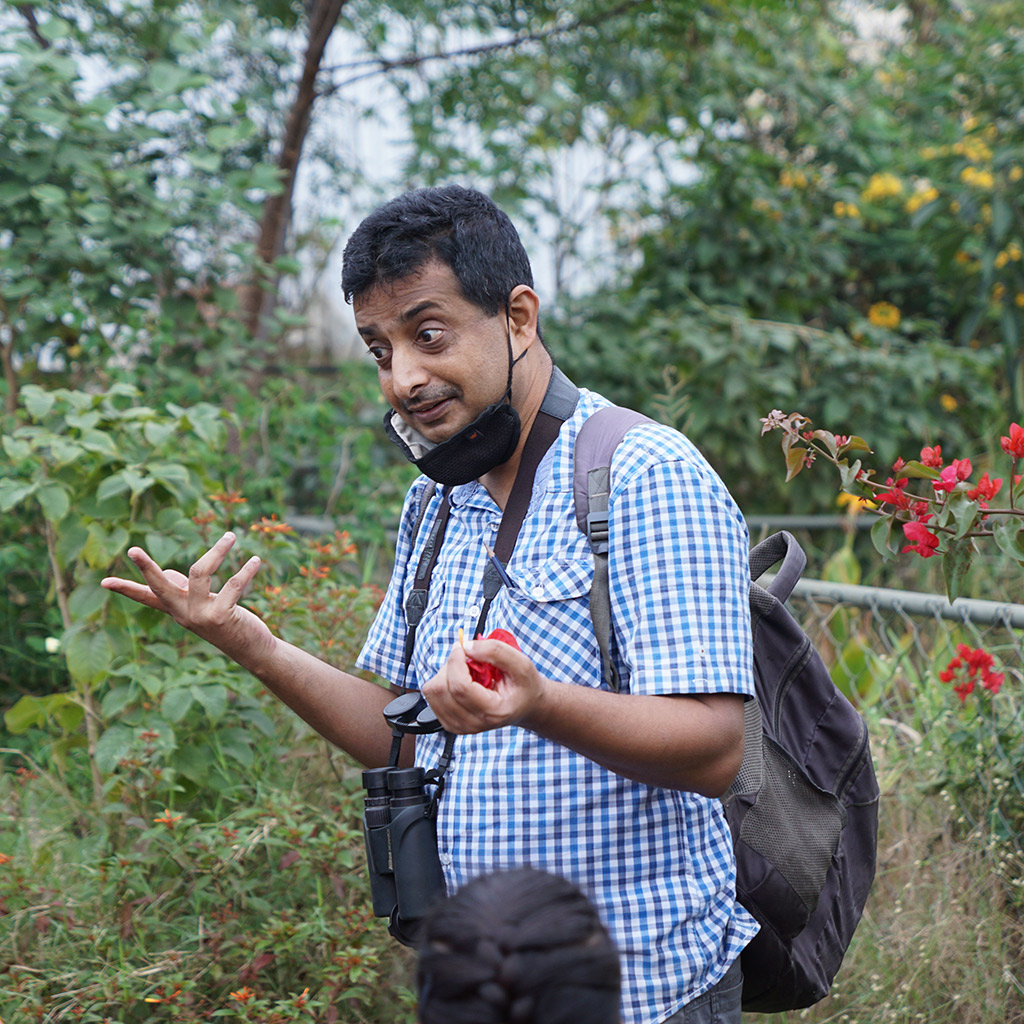
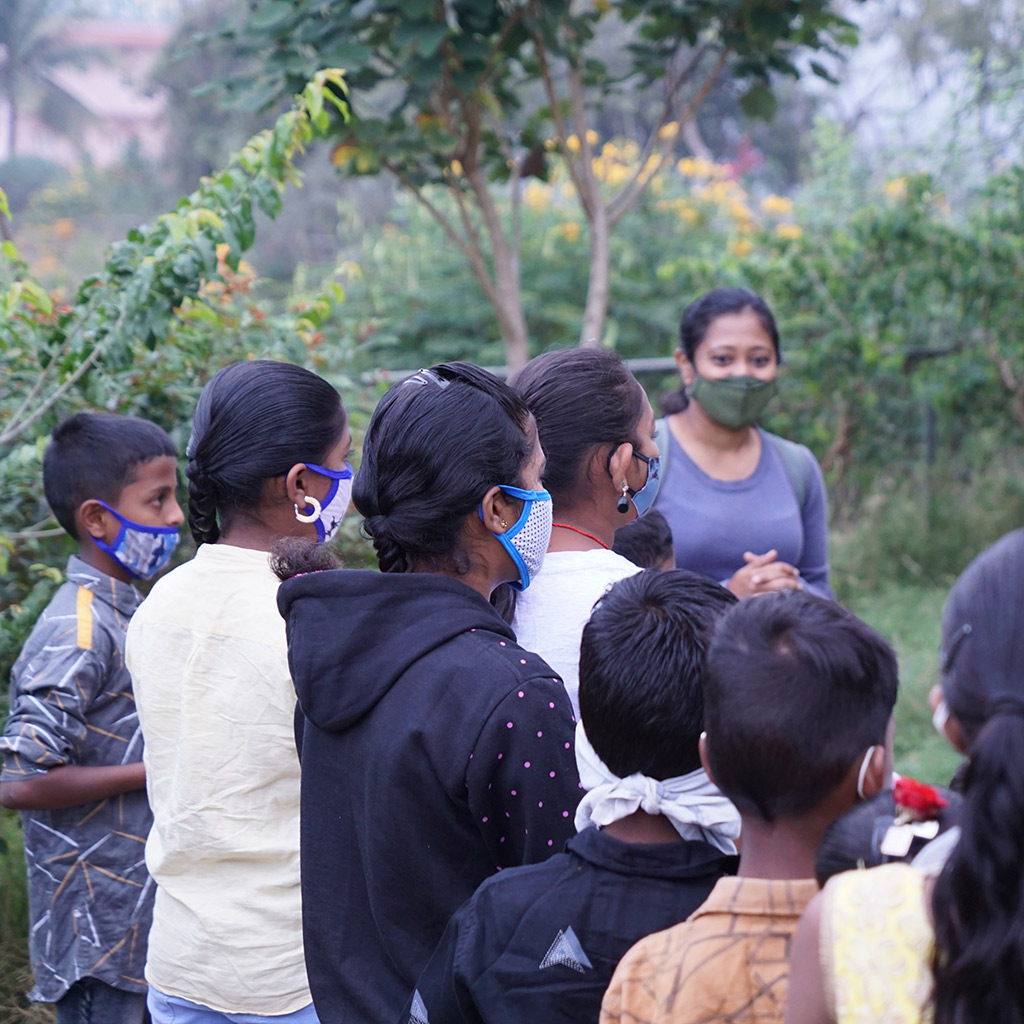
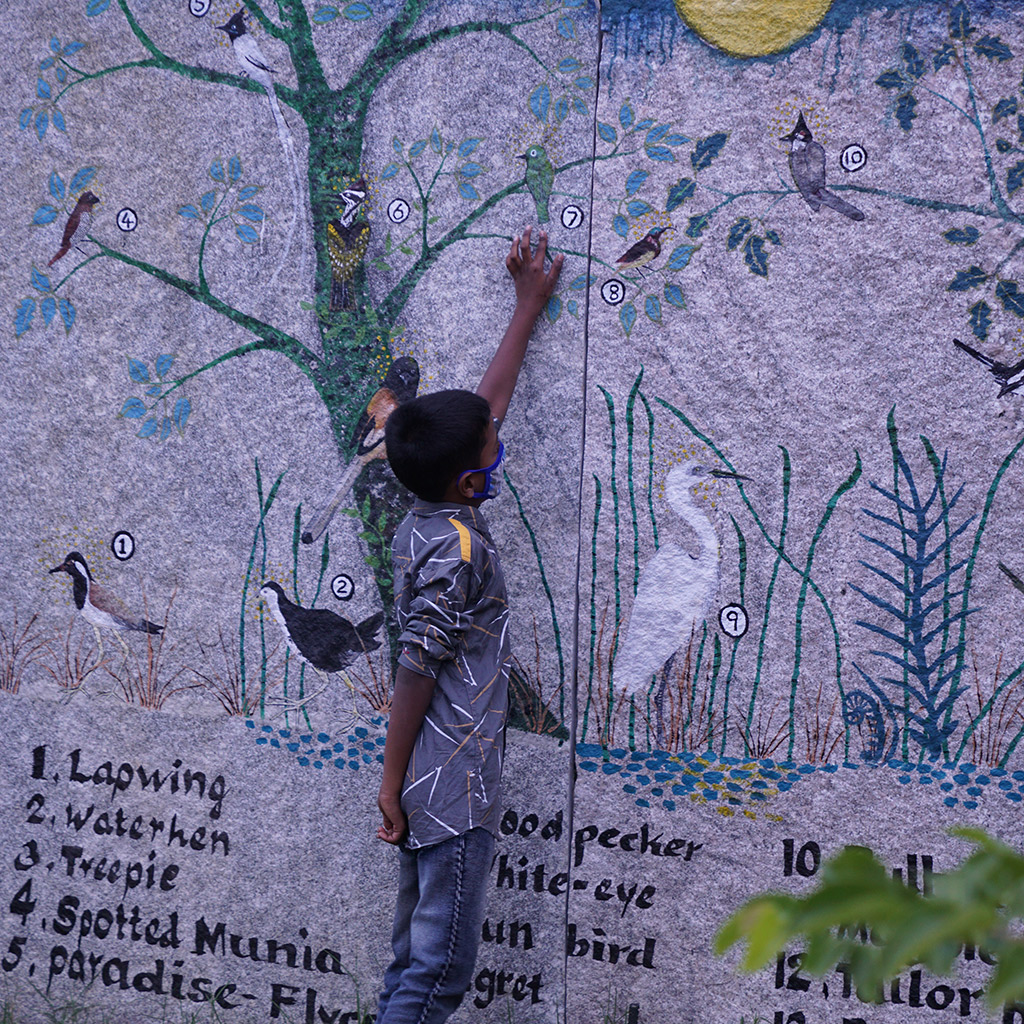

Basics of Wildlife Filmmaking with Adarsh Raju
“Filmmaking is all about telling a story”, says Adarsh Raju, a renowned wildlife and documentary filmmaker. Adarsh has been interested in wildlife from the very beginning, when he started trekking in the hills of the Western Ghats after his graduation. He says that not many people know about wildlife videography. According to him, wildlife videography is all about merging travel and conservation. Through this workshop, he described the differences between wildlife photography and videography. There were 5 participants and they all started off by introducing themselves and their backgrounds in wildlife. All the participants aim to make a short documentary on the wildlife around Good Earth Malhar, as the culmination of all their efforts and talents, with the guidance of Adarsh.

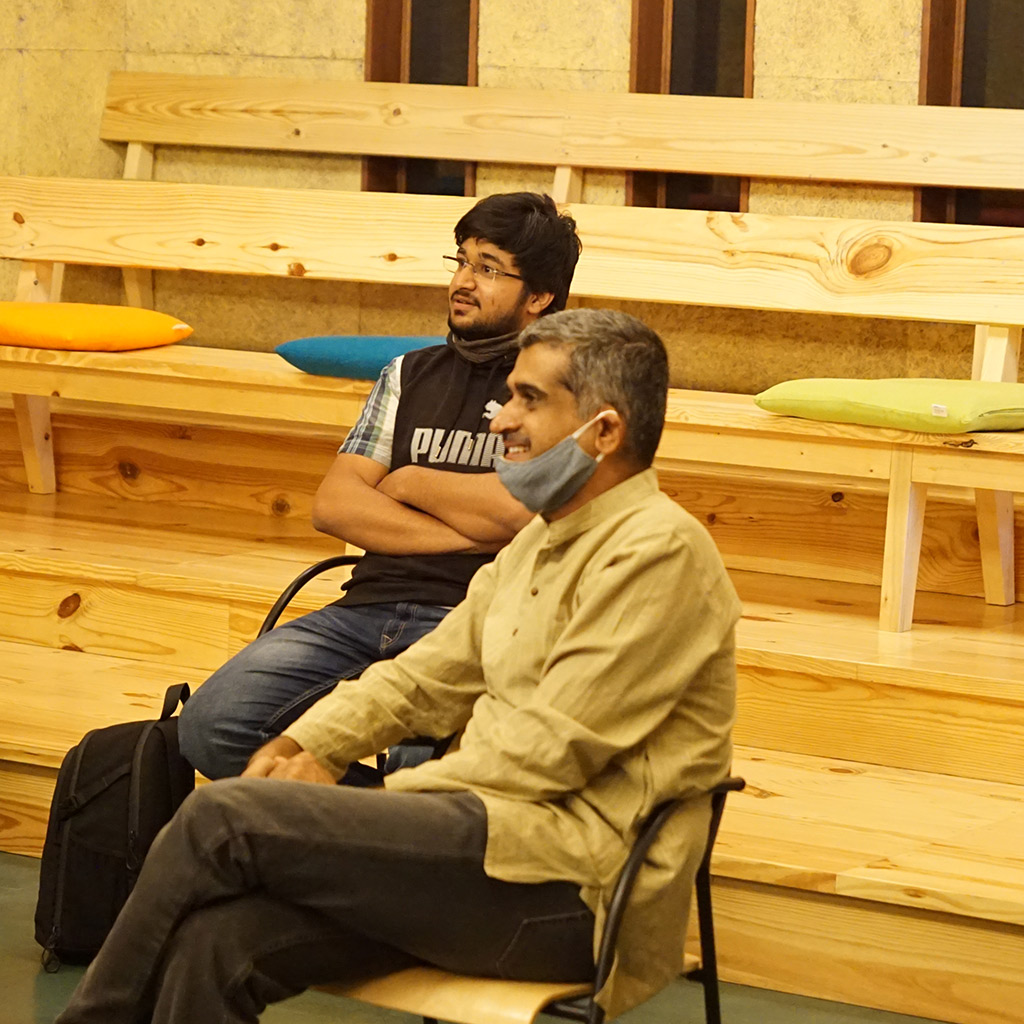
Nature Journalling with Sangeetha Kadur
Sangeetha Kadur is a renowned wildlife and nature artist who aspires capture wilderness on paper and canvas. Nature journaling takes a different approach to the way we look at nature. Sangeetha says that nature journaling is all about building a connect with nature and keeping an emphasis on observation. Ruthu and Shreya, two participants of this workshop, say that they learned to look at nature in a new way. Blind contour was something that was spoken about in the workshop, which is a basic sketching technique where you sketch only by observing the object and not looking at the paper. This technique puts an emphasis on observational skills.
Nature journaling is all about expression, observing, exploring and building an intimate connect with nature.
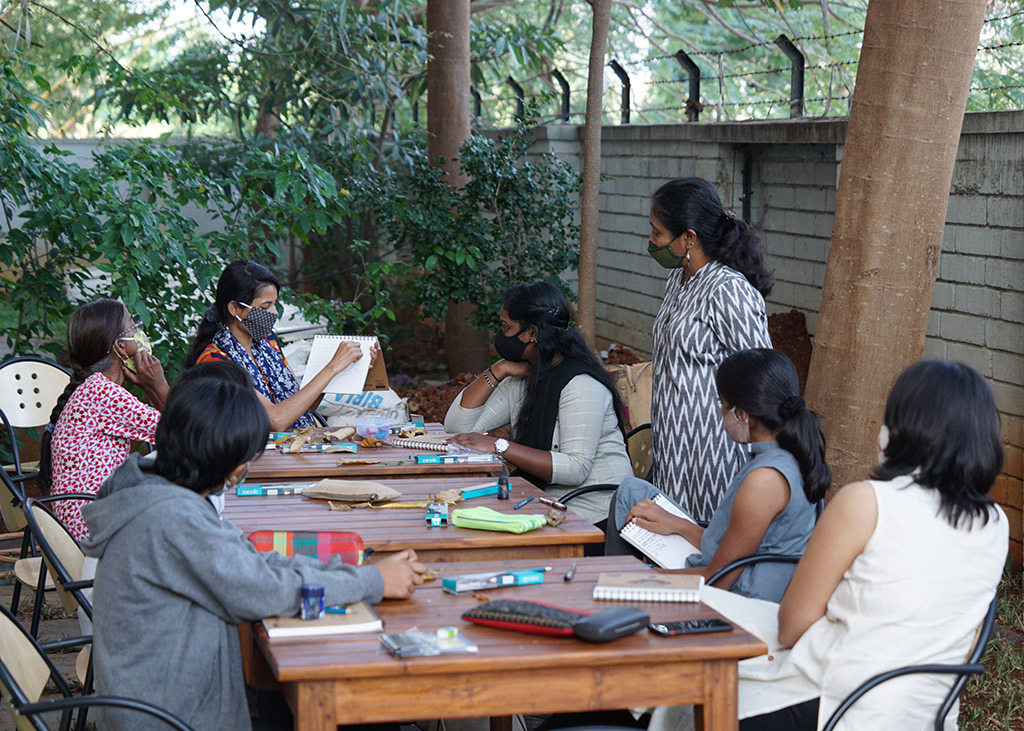
Wild Malhar Diaries
600 sq. ft. and Beyond of Wilderness with Prakruthi Subramanya
Good Earth Malhar is teeming with wildlife and it is nowhere more apparent than Prakruthi and Vinay’s backyard. As a child, Prakruthi wasn’t the biggest fan of animals or wildlife, but as she became older, her understanding and appreciation of wildlife and animals also grew. In 15 minutes, Prakruthi talks intensively of her wild visitors and residents. From small insects to large mammals and everything in between, there is always action in her backyard. Prakruthi says that there is wildlife everywhere, but the key is observation. Observing your environment will make you discover wonderful things. There is always action where ever you go.
Urban Wildlife with Karthikeyan S
What is wildlife? According to Mr. Karthikeyan, wildlife is anything that is not domesticated. He says that many people tend to think of wildlife as only animals, but wildlife also includes all the plants, birds, insects, amphibians, reptiles and everything in between. Mr. Karthikeyan started off his talk by talking about the importance of wildlife in in an urban setting. Wildlife can be found everywhere, even in the most unexpected places at the most unexpected times. Mr. Karthikeyan spoke extensively about the wildlife found in and around Bengaluru. According to him, us humans have exploited the urban ecosystem, allowing only a few species to thrive while the population of other required species have reduced drastically. There is not enough flora and fauna in our city to support this fragile ecosystem. Mr. Karthikeyan also spoke about how fortunate we are to live in a place like Good Earth Malhar. Malhar has a thriving ecosystem with wildlife around every corner. This talk helped us look at wildlife in a whole new perspective and learn more about how even the smallest of insects can be essential to the whole ecosytem. It opened our eyes to the urban landscape and the creatures we share our space with.
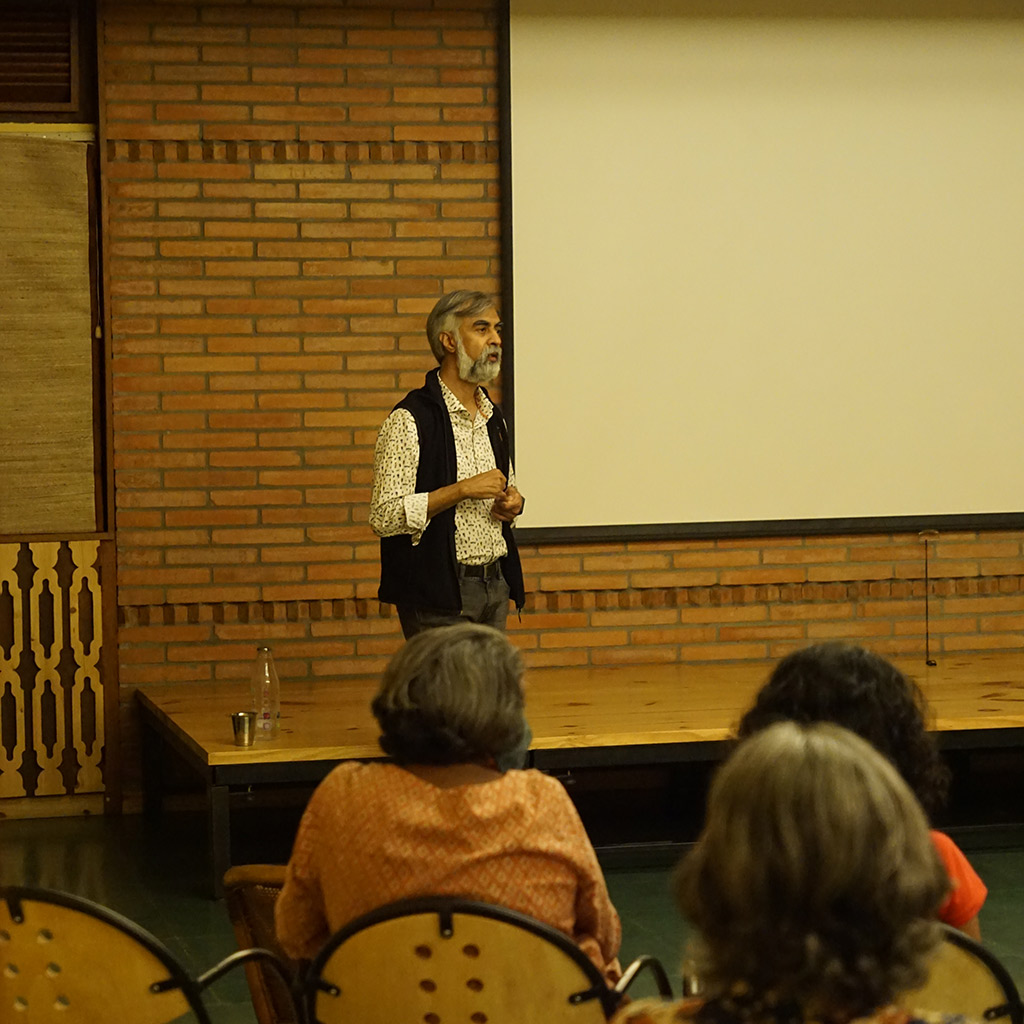
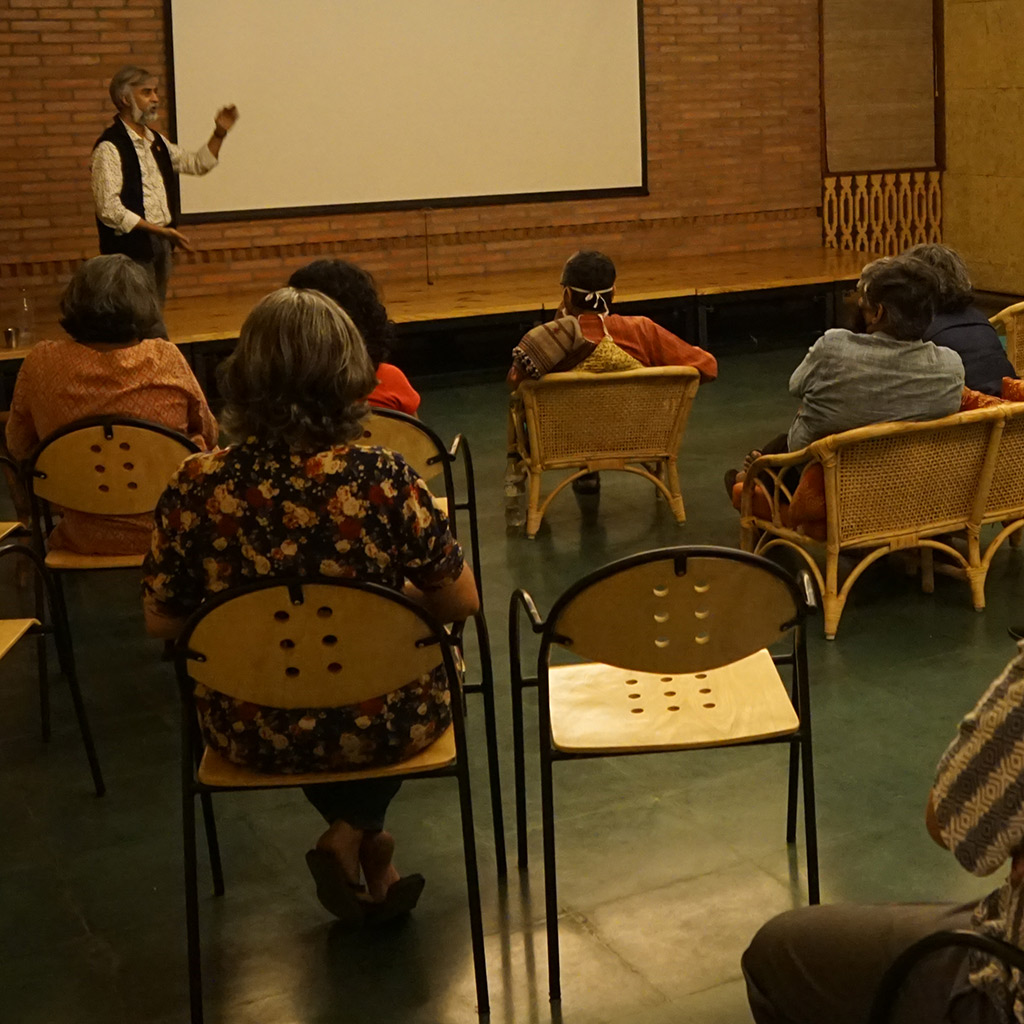
Wild Origami with Sarah Thomas
Sarah Thomas is a textile designer by profession and also a passionate origami artist. She started off with an introduction to origami and the materials used in origami. Precision, patience and skill all that is needed to do origami, she says. Origami is all about converting 2D pictures into 3D works of art.
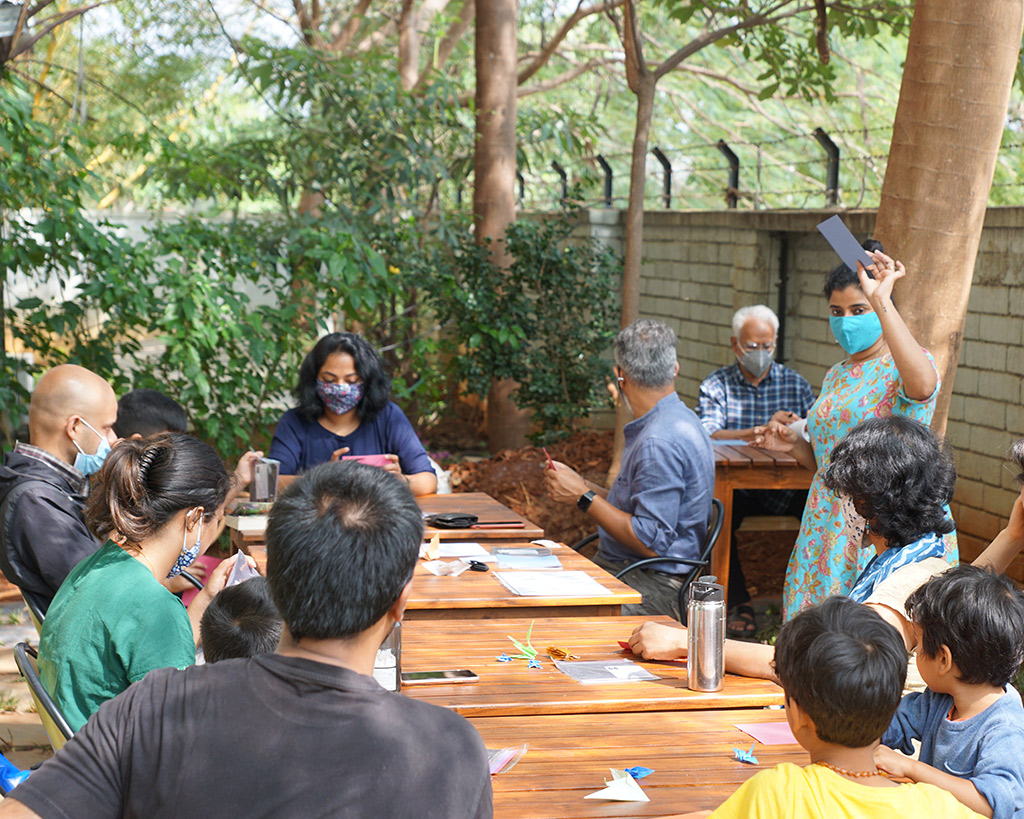

Nature Observation Project with Chayant Gonsalves
“The natural world is a library of knowledge that we are constantly learning more about” Chayant is an ecologist by training, with a soft spot towards anything that crawls, slithers, flies, stings, and purrs. Each participant chose a topic which they will explore by observation, documenting and research. The participants examined various leaf structures and venations and learnt more about observing what is around us. Veer, one of the participants, says that, before this workshop he hadn’t really paid close attention to the wonderful world of plants and insects around him. The aim is to learn something new together from personal observations and existing resources. Chayant says that this is to foster and deepen the relationship with nature. Some of the participants even found this whole workshop to be therapeutic. Again, the main keyword to be able to something like this is observing.

Book Talk: This Fissured Land, written by Madhav Gadgil and Ramchandra Guha
with Benson Isaac
Benson Isaac talks about the book “This Fissured Land: An Ecological History of India written by Madhav Gadgil and Ramchandra Guha. Benson talks about how Gadgil and Guha offer fresh perspectives on the ecological history of India and also on the theoretical issues that interest environmental historians. Benson also talks about how the authors portray India’s ecological history throughout different periods in history and the impact of changing patterns of resource use on human societies. Gadgil and Guha compare the histories of Indian civilization throughout the years to other settlements and civilization’s around the world.
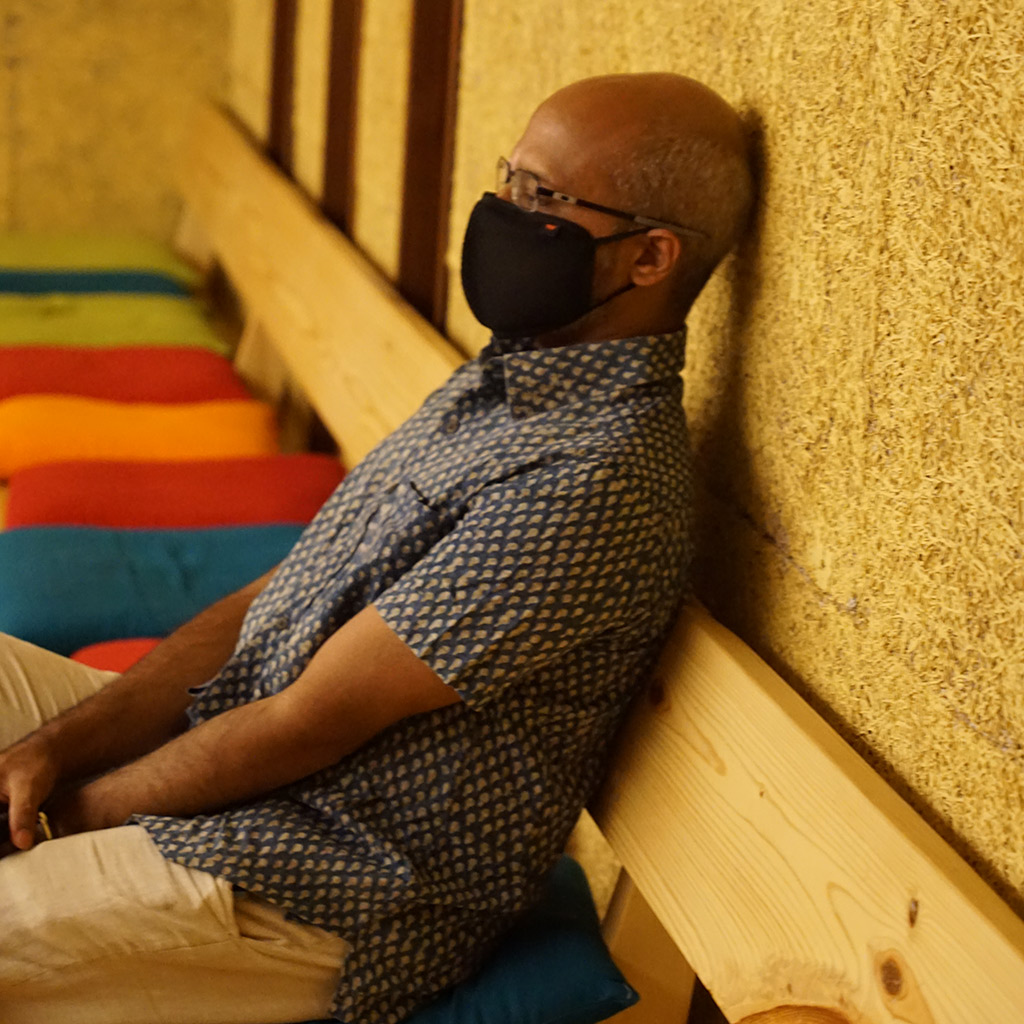
Wildlife Conservation: Beyond the Pretty Picture and Science with Sanjay Gubbi
Sanjay Gubbi is a conservation biologist based in Karnataka, India. His work is mainly focused on the conservation of large carnivores mammals, like tigers and leopards. He says that wildlife conservation is often seen as a losing battle, and an often misunderstood subject between animal rights, tree planting, photography and others. He says that despite India’s huge population, which shows no sign of decreasing, and other social issues, India has managed to do some amazing work in the field of conservation, by saving some of the world’s rarest wildlife species. Social issues are often interconnected with conservation. We must keep in mind, the human population, especially the Adivasi and tribal community, many of whom depend on the forest and wildlife for their livelihood. Wildlife conservation is not only about saving the forests and animals, but also about keeping the local population in mind. Mr. Sanjay talks extensively about co-operation with government leaders and how without their support, no work can be done. A lot of the good work done in the forests of Karnataka, is all thanks to Mr. Sanjay. There must just be a single person with passion for wildlife and a vision. Wildlife requires a good understanding of society, the political scenario along with perseverance and passion, and resilience
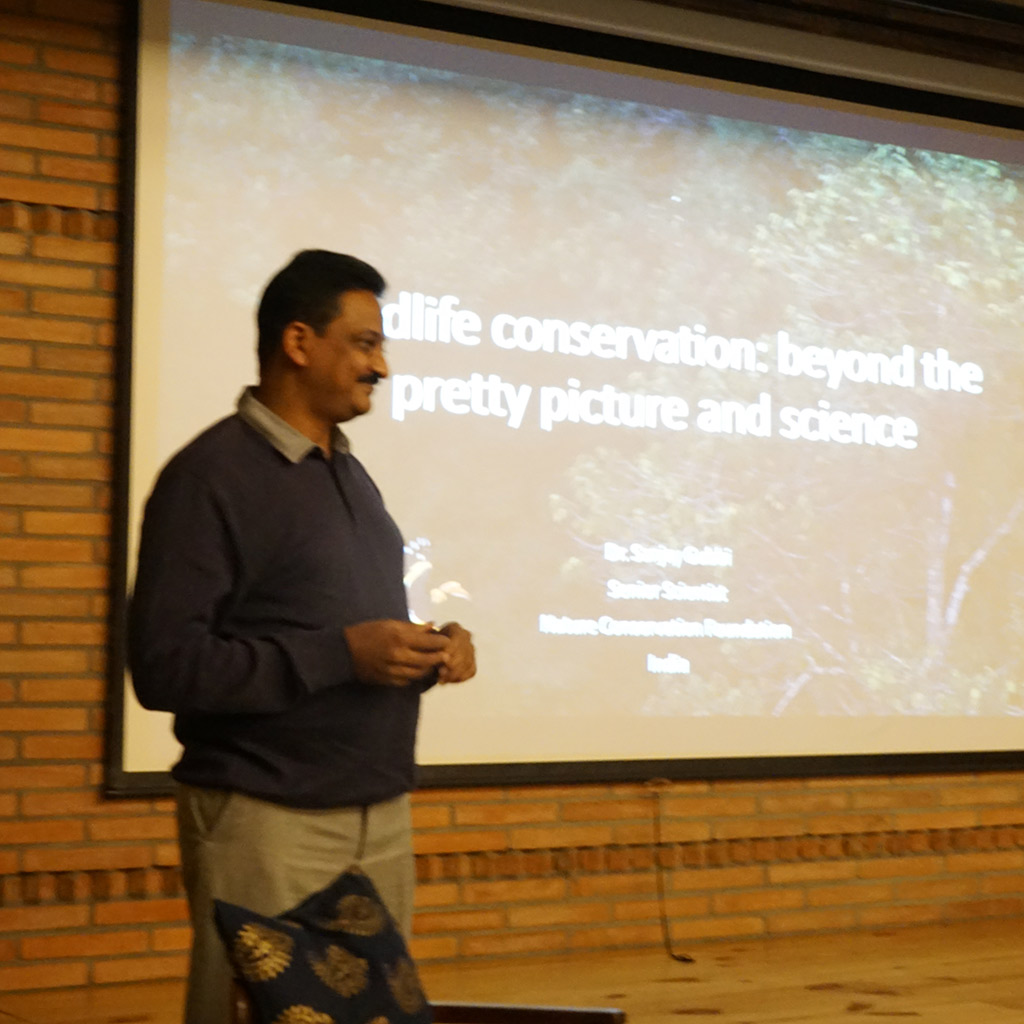

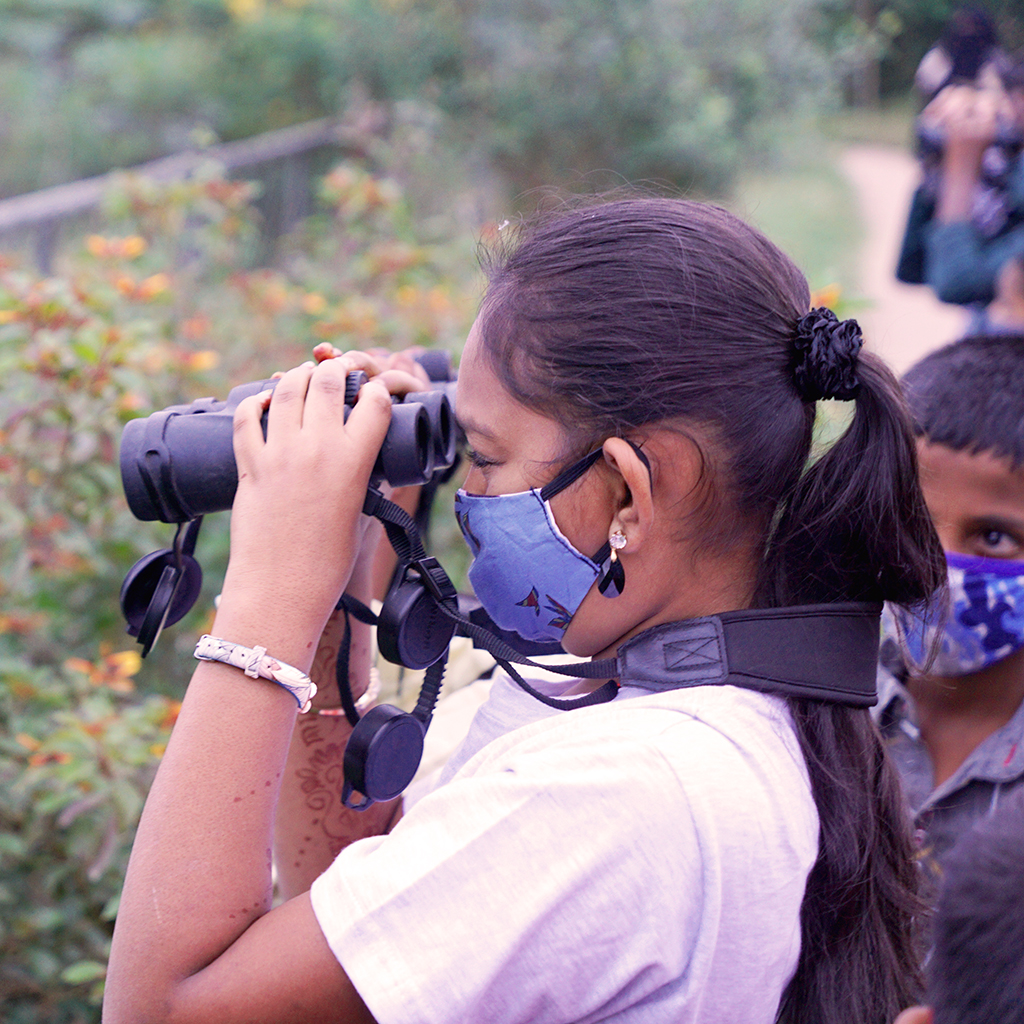
Thank you for this very comprehensive writeup for people like me who couldn’t attend any of the workshops.
Very well written Pranav! You’ve already become a journalist 😁👍
The photographs are also good! Keep doing the good work👍